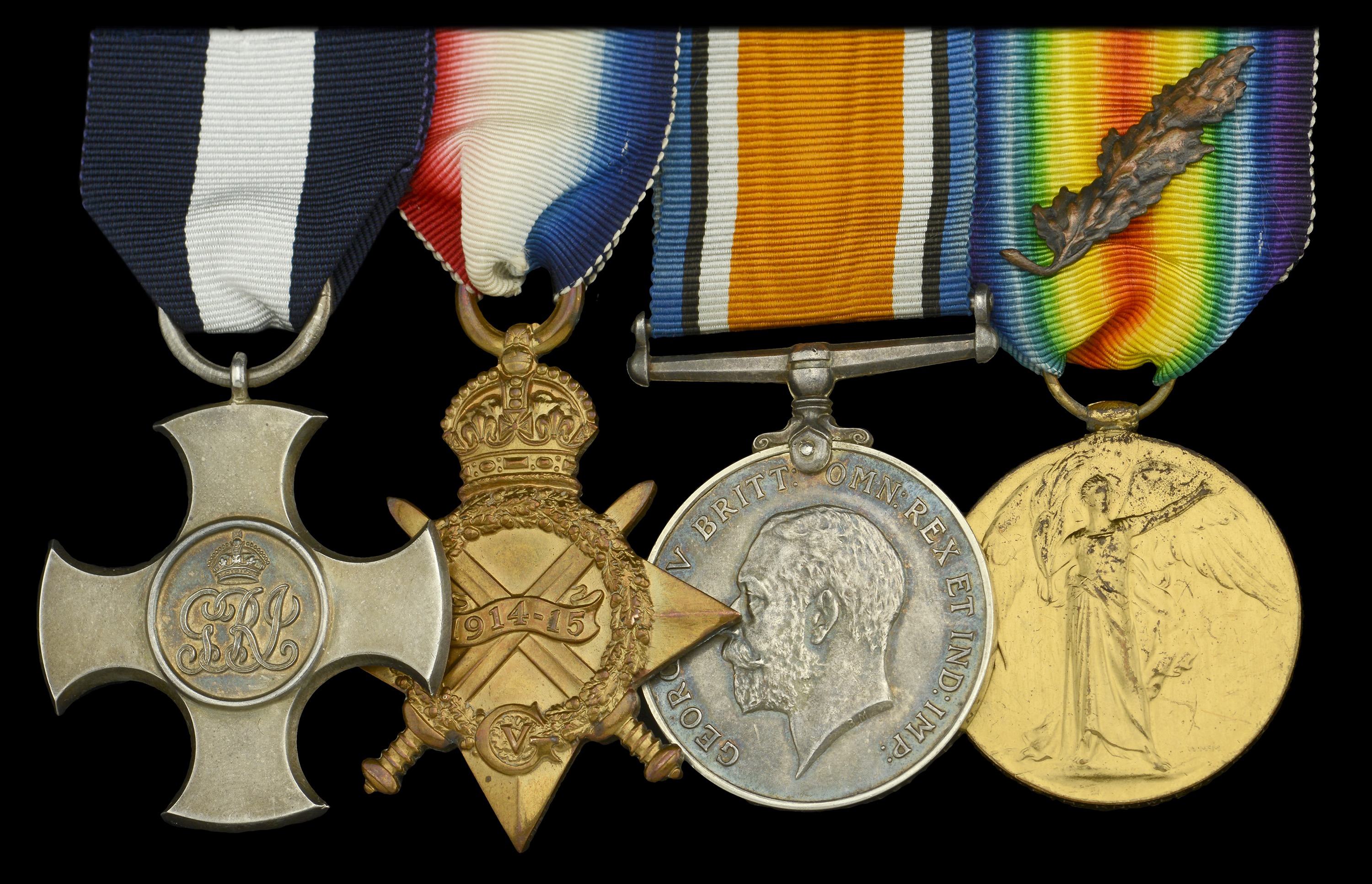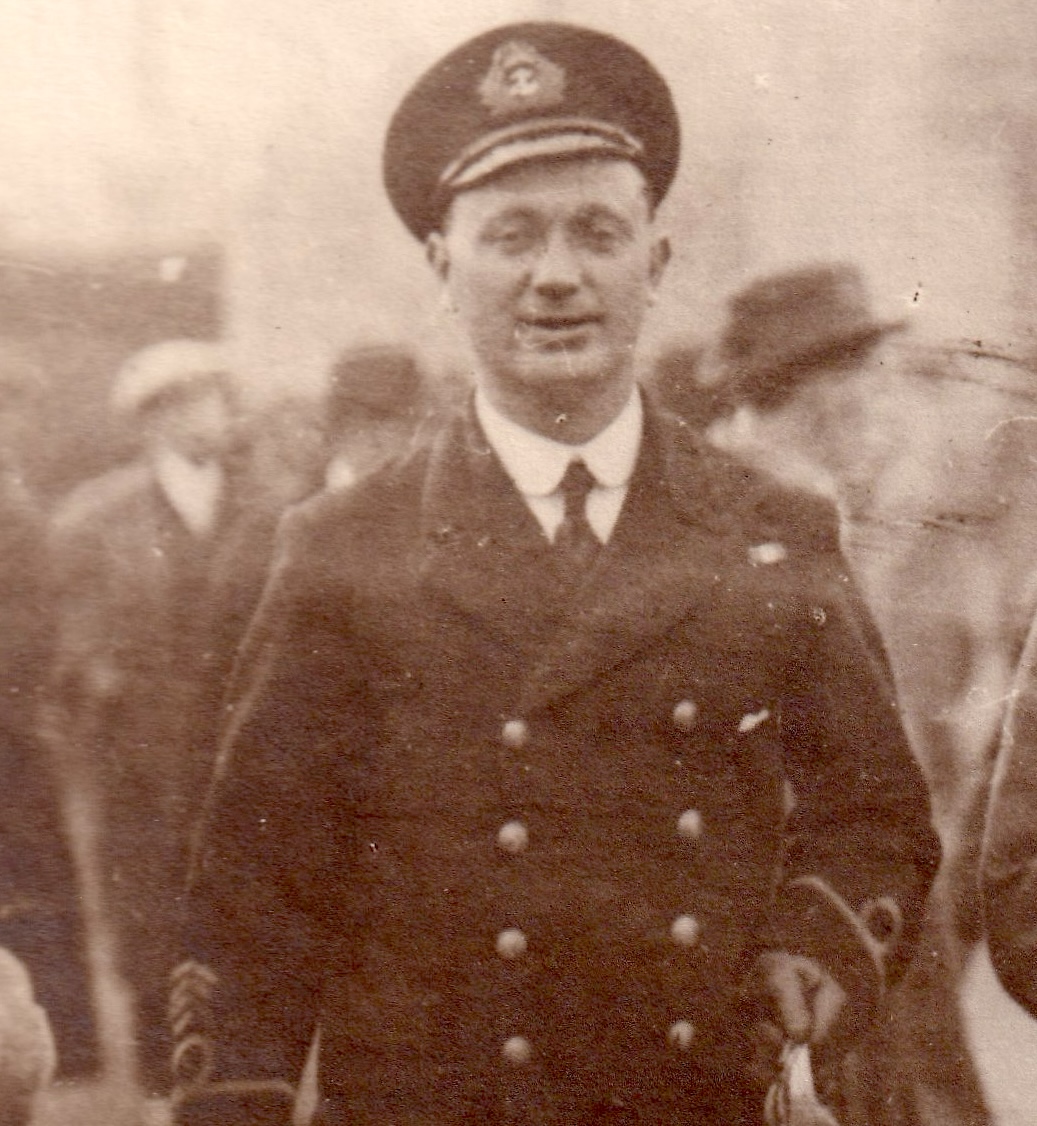A Great War ‘Q-ship operations’ D.S.C. group of four awarded to Artificer Engineer F. H. Knowles, Royal Navy, who was Mentioned in Despatches for his conduct when the ‘Q’ ship H.M. Patrol Craft 61 rammed and sunk the German U-boat UC.33 on 26 September 1917 Distinguished Service Cross, G.V.R., hallmarks for London 1918, unnamed as issued; 1914-15 Star (Art. Eng. F. H. Knowles. R.N.); British War and Victory Medals, with M.I.D. oak leaves (Art. Eng. F. H. Knowles. R.N.) about extremely fine (4) £1,600-£2,000 --- D.S.C. London Gazette 5 October 1918: ‘For services in vessels employed on escort, convoy, and patrol duties between 1 January and 30 June 1918.’ The recommendation from his service papers states: ‘For marked zeal, initiative and valuable assistance rendered on all occasions ... his name has been brought to notice on 2 or 3 occasions for the high state of efficiency that exists on board in his department, for the promptitude displayed whenever called upon.’ M.I.D. London Gazette 17 November 1917: ‘For services in action with enemy submarines.’ The recommendation from his service papers states: ‘For the sinking of a German Submarine by P.C.61 on 26 September 1917.’ Frank Henry Knowles was born in Oswestry, Shropshire, on 27 February 1881 and joined the Royal Navy as an Acting Engine Room Artificer Fourth Class on 16 February 1903 for 12 years. Advanced Chief Engine Room Artificer in H.M.S. Ajax on 12 February 1914, he was promoted to the Officers Section on 1 September 1914, being commissioned Acting Artificer Engineer. Posted to H.M.S. Temeraire, he was promoted Artificer Engineer on 7 September 1915, and was present in the Temeraire at the Battle of Jutland on 31 May 1916, before being assigned to the Patrol Craft “Q” Ship 61 as an original member of that ship on 28 December 1916. ‘Q’-Ships - Mentioned in Despatches and D.S.C. H.M. Patrol Craft 61, also known as Downton & Chesney, was a purpose built heavily armed Naval Vessel designed to resemble a Merchant Ship and was intended to act as a Decoy Vessel or “Q” ship. In their construction they were provided with bilge protection and special fillings which were intended to keep them afloat after being torpedoed, to enable them to dispose of their attackers. It was also hoped that their shallow draft of only 8 feet would cause the torpedoes to run under them. The Captain of the ship was the famous Arctic Explorer, Captain Frank Arthur Worsley, D.S.O. and Bar, O.B.E., and Polar Medal Recipient, who had just return from the Imperial Trans-Antartic Expedition under Shackleton. With Joseph Stenhouse as his First Officer, and Frank Knowles as the Artificer Engineer, P.C.61 was commissioned on 31 July 1917, and was equipped with a semi-automatic 4-inch gun that was hidden by a tarpaulin suspended from crane derricks when not in use. She also had a ram at her bow. Shortly after its commissioning, Worsley took his new command to sea on patrol. Most patrols were uneventful, sometimes U-boats were sighted and pursued, but these invariably got away. In late September 1917, Worsley and the PC.61 were on patrol to the south of Ireland. On 26 September 1917, a nearby tanker, the S.S. San Zeferino, was struck by a torpedo from the German mine-laying submarine, UC-33, commanded by Ober Leutnant E. A. Arnold, which had left Germany on 16 September with a full load of mines. Observing the explosion, Worsley gradually slowed his propellers, hoping to deceive the U-boat's crew into thinking his P-boat was leaving the area and luring the submarine to the surface. The deception was successful and the UC-33 surfaced, intending to sink the tanker with its deck gun. Worsley immediately ordered full speed ahead and, realising that he would lose time in manoeuvring his ship into a position in which she could use her guns, set a collision course with the U-boat, intending to ram the submarine. At high speeds the bow of the PC.61, to which the ram was fitted, lifted out of the water considerably, and Worsley had to reduce speed at the right moment in order for it to be at the right height to strike the submarine. He timed the reduction of speed of the PC.61 perfectly and she struck the UC-33 midship as it was submerging. The submarine rapidly sunk with nearly all hands, the exception being the captain, who was rescued and later gifted Worsley a silver whistle. The damaged San Zeferino was towed to Milford Haven in Wales, which took 12 hours in an area where other U-boats were known to be lurking. For this action Lieutenant Commander Worsley received the Distinguished Service Order (with Shackleton sending him a telegram congratulating him on his success); the First Lieutenant, Lieutenant J.R. Stenhouse R.N.R., was awarded the Distinguished Service Cross; and Petty Officer Cook was awarded the Distinguished Service Medal. For his part in the action Knowles was Mentioned in Despatches. He was also recommended for promotion by Worsley on 6 November 1917: ‘Commanding Officer, PC61, Recommends that Art Eng F Knowles be promoted to Engineering Lieutenant. He is in my opinion a very capable officer and this officer is suitable in every respect for his engines and with electrical steering gear he showed great skill and judgement in towing the 6500 ton San Zeferino after it had been torpedoed.’ Remaining in PC61, the recommendation for Knowles’s promotion was regretfully turned down on the basis that the Admiralty was unable to promote him over the heads of other deserving officers. Consolation arrived the following year, however, with the award of the Distinguished Service Cross. Following the cessation of hostilities Knowles volunteered for the Mine Clearance Service, before retiring at his own request on 19 June 1920. Sold with the recipient’s original Mention in Despatches certificate; a photograph of the recipient prior to his D.S.C. Investiture; copied service papers; and other research.









